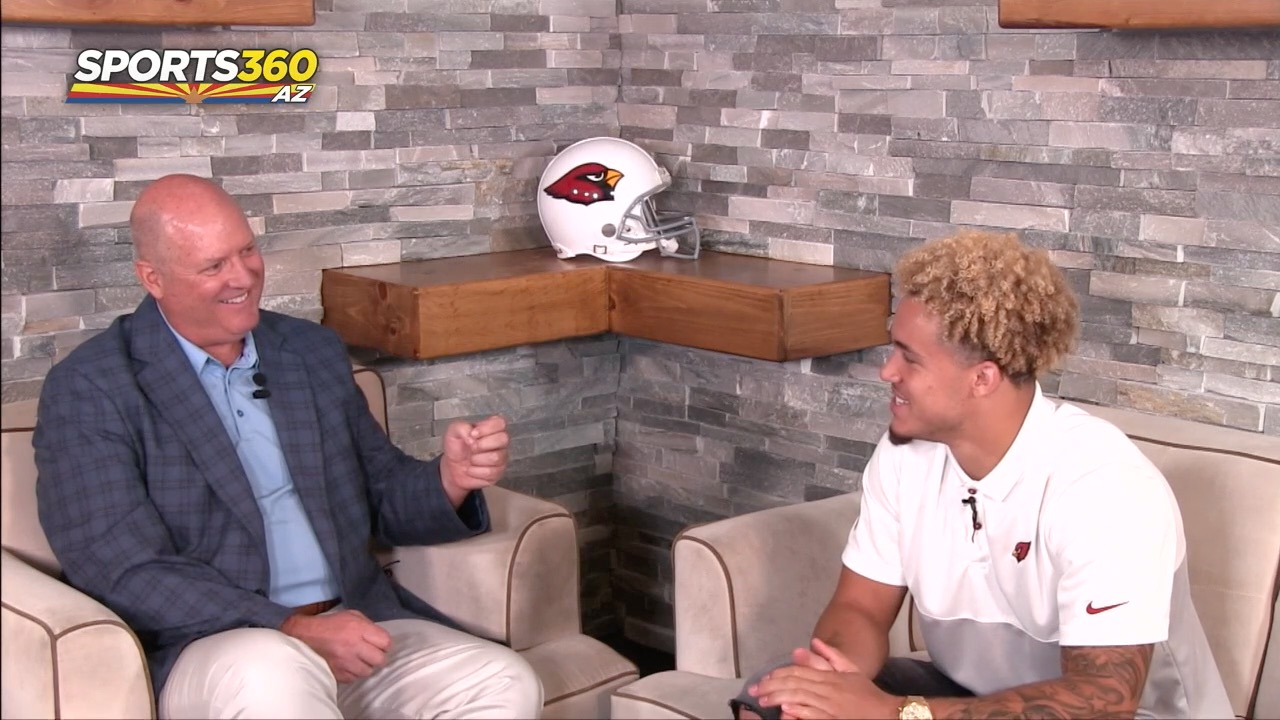Story by Evan Oscherwitz
The 2021 NFL Draft will take place in just three weeks, and the already sizable buzz surrounding this year’s quarterback class continues to grow as the draft day draws closer.
While the 2018 draft saw four quarterbacks selected in the first 10 picks, the 2021 quarterback crop has been touted by some pundits as one of the best in recent memory.
Of the 22 quarterbacks who declared for the draft, five have generated top-10 considerations, and it is possible that this year’s group could surpass the mark set by the 2018 class.
Former NFL quarterback Brock Huard, now a color commentator for Fox College Football and host on ESPN Radio, has studied each of this year’s quarterback prospects extensively.
On Monday, Huard appeared on The Brad Cesmat Show to give his analysis on each of the top-five quarterbacks in the draft and where they should be selected on Apr. 29.
Like most pundits, Huard agrees that Clemson University’s Trevor Lawrence should be the first quarterback off the board on draft night.
In his three years of college, Lawrence won a national championship and three conference titles, compiling an impressive 34-2 record as a starter.
His prototypical size, arm strength and above-average mobility have all made him a popular favorite to be the first player selected overall.
“To me he’s number one, obviously, in this class,” Huard said. “He’s going to go number one. I think there’s a bigger delta between him at number one and whoever you want to put at two, three, four or five.”
While there is a general consensus that Lawrence will be the first overall pick in the draft, the placement of the other four top quarterbacks is a topic of debate.
Of those four, Brigham Young University’s Zach Wilson has seen his stock rise the most in the leadup to the draft, though questions still remain about his NFL-readiness and small body of work in college.
“Loosest arm in this draft,” Huard said. “The most natural, fluid, loosest passer. What I don’t like is it’s really a one-year body of work. You go back to his sophomore year and there’s a lot of tape that’s tough.”
Wilson rocketed up draft boards thanks to a strong season at BYU and an even more impressive pro day, but prior to the season it seemed as though Ohio State’s Justin Fields was a lock to be the second quarterback off the board.
Fields enjoyed a strong season as well, leading the Buckeyes to the national championship game, but his tendency to take unneeded sacks has concerned some analysts, including Huard.
Nonetheless, his size and athleticism make him an intriguing option for teams in need of a quarterback.
“Tremendous athlete, unbelievably competitive,” Huard said. “There is some disturbing sack tape. He took a beating between an unbelievably talented line at times, so that to me would be the big question mark.”
Behind Lawrence, Wilson and Fields, North Dakota State’s Trey Lance projects to be the fourth quarterback taken.
Like Wilson, he boasts natural arm talent, but had a limited body of work in college and played primarily against smaller schools.
While some other analysts have suggested that there is a gap between the top three quarterbacks and Lance, Huard thinks he is in the same category as Wilson or Fields.
“[Lance] is just so doggone gifted,” Huard said. “He’s fluid, he’s pretty darn natural, he moves very, very well. I’d put him there (with Wilson and Fields).”
Despite the questions surrounding his experience and strength of schedule in college, many mock drafts have Trey Lance going in the first 10 picks on draft night. In the case of Alabama’s Mac Jones, things are much more controversial.
While Jones led the Crimson Tide to an undefeated record and a national title in his only season as a full-time starter, his skillset can best be described as average, and Huard stresses that using a top-10 pick on Jones would be a large risk.
“I’d probably put Mac one step down (from the top-four),” Huard said. “It’s only because of the physical abilities. I just don’t see a ‘plus’ trait. There’s not ‘plus’ size, there’s not a ‘plus’ arm, there’s not a ‘plus’ body. I’d be very, very wary of taking him anywhere near the top-10.”
Despite his physical limitations, Jones’ college success, decision making ability, and throwing accuracy will still make him a commodity, and with many NFL teams in need of an upgrade under center, it is entirely possible that one of them rolls the dice and drafts Jones in the top-10.
Wherever these five quarterbacks end up being selected, past drafts have proven that organizational fit matters more than draft position, and what happens after a player gets drafted ultimately determines how successful their career will be.
All five are capable of becoming NFL starters, and only time will tell who ends up becoming the best of the bunch.




